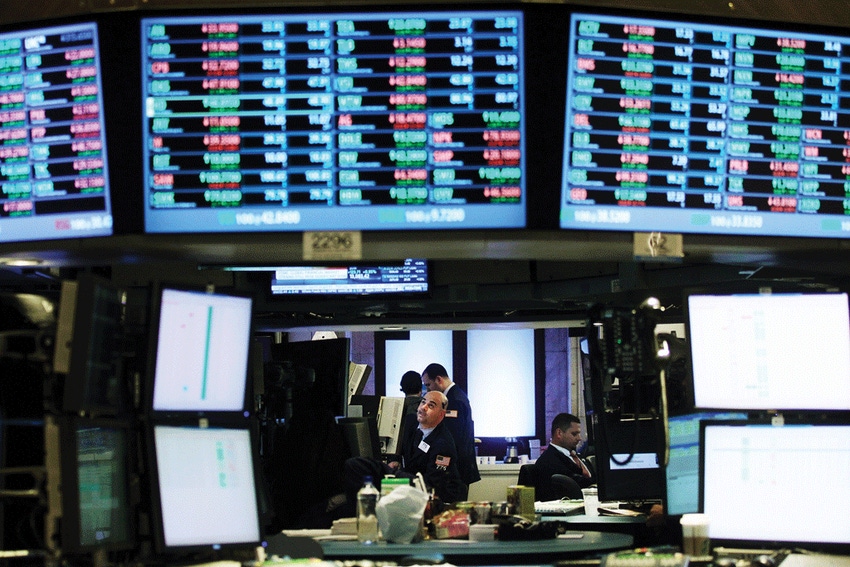Rate hikes will increase operating costs slightly, so work with your bank to make adjustments.
February 14, 2017

Just weeks after the Federal Open Market Committee (FOMC) voted to increase interest rates by 25 basis points from 0.5% to 0.75% on Dec. 14, producers were beginning to ask what long-term implications are in store for the cattle business. The widely expected interest rate hike was the only one last year, with three more projected 25-point increases to happen in 2017.
First off, what triggered the increase? According to Ernie Goss, director of Creighton University’s Economic Forecasting Group, it was the combination of a strengthening U.S. economy and declining unemployment rate that influenced the FOMC, a branch of the Federal Reserve Board, to make the increase in an effort to prevent inflation.
“The Federal Reserve is the bank for banks, controlling the money supply, interest rates throughout the U.S. — and [it] incentivizes economic growth,” Goss says. Its “two biggest goals are to maximize employment and produce price stability. The primary indicator to raise rates this past December is that the unemployment rate had gotten to a low enough level [that the Federal Reserve] felt there was a risk of greater inflation pressure to counter that increase in the consumer price index.”
The Federal Reserve, which aims to keep inflation at 2%, has felt very little pressure to raise rates in the last five years. However, pressure from such things as job growth and the resulting decline in unemployment rates, along with household spending increases, began to rise in mid-2016, leading to its decision.
Good or bad?
But what does this mean for the cattle industry? “It’s twofold,” says Troy Soukup, vice president of Citizen State Bank Co. The community bank in central Kansas is home to a diverse row crop and livestock production clientele, with Soukup having skin in the game with a commercial cow-calf herd and multiple regional crops. His unique perspective keeps him analyzing the market on both sides of the fence — as a cattleman and a banker.
To Soukup and Goss, the 25-point increase will not significantly impact the agricultural industry in general, and the projected 75-point increase for 2017 won’t either.
“No one wants their costs to go up. However, if you look at the reason rates are going up, it shouldn’t put cattlemen in a panic, because increasing rates means the economy is improving, and we may see more robust demand than what we’ve had,” Soukup says.
The cattleman side of Soukup says to keep an eye on supply and demand for beef. And as the economy strengthens, domestic consumers as a whole will have more money in their pockets to spend on higher-end meat counter products like beef.
The biggest impact he sees from rising interest rates is volatility in land prices, especially for the land-intensive cattle business. He says high interest rates and rising interest rates tend to push land values down since it is tied to the cost of capital.
“Go back to 2013-14, some of the best years the cattle market has ever seen. Having that kind of monster profitability with ultra-low interest rates is like throwing gas on a fire, and land values skyrocketed,” he says. “If there had been higher interest rates to help keep land market appreciation at a slower rate, producers would have been paying less for land and had similar debt payments. We all know profitability has come down, and land prices tend to be sticky once they go up, so rising rates and land values will be something the American rancher wants to keep an eye on.”
Market conditions
Strong market conditions across the cattle industry board in 2013-14, which have become significantly weaker in 2016, have also played a part in how producers handle their line of credit. When ag markets are strong, ag producers tend to finance operational expenses with the incoming cash flow, lessening their reliance on short term credit. However, tough market prices for beef and grain in 2016 have greatly increased the need for operating credit.
“We saw a big spike in the last year in operating loan demand as revenues fell much faster than cost structures did,” Soukup says. “My expectation is that is going to curb off some as we go forward as cost structures adjust, and producers must make expenses match revenues. It is all about survival of that adjustment period. What we are seeing out there is that guys can cover their operating expenses, pay their interest and a portion of their term principal, but are struggling to pay all of their principal payments as scheduled. “
For example, say a cow-calf producer has a $100,000 cattle loan on a five-year amortization, with an annual payment of $23,000 and an annual interest portion of $5,000. Replacements are kept every year, and older cows are culled out, keeping the value of the herd fairly consistent.
“If rates are bumped up 1%, he now owes $6,000 in interest for a total payment of $24,000. So it’s not hugely impactful,” Soukup says. “And as long as he keeps good replacements and the herd doesn’t depreciate, we can work with him to defer some principal payments and ride out the cycle.”
About the Author(s)
You May Also Like



